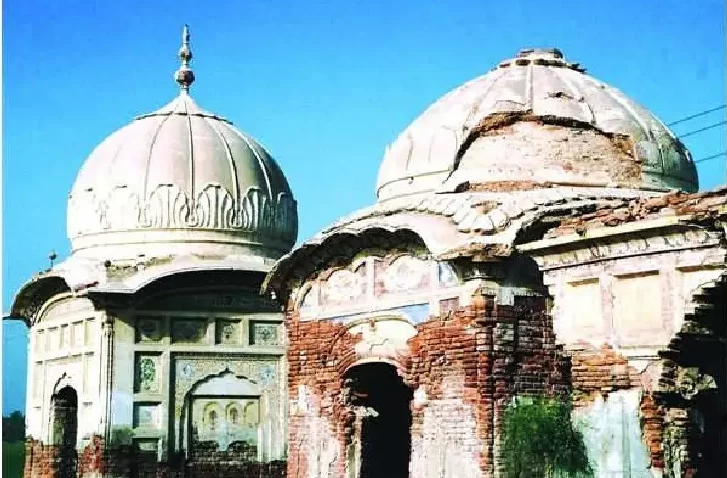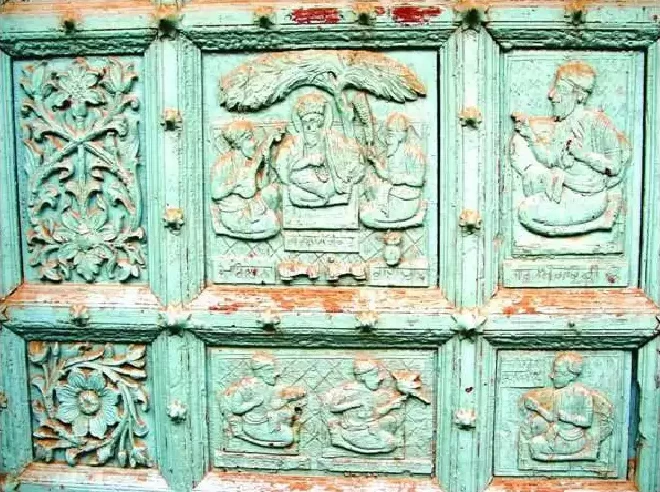
Author believes that the Talpur Mirs of Khairpur State were the most liberal rulers of Sindh who not only patronized Hindus and other minorities but also erected temples for them.
Zulfiqar Ali Kalhoro
There is dearth of scholarly research on oral history in Sindh. Whatever was written is fraught with biases which have never been challenged by the contemporary historians of Sindh. The Talpur Mirs, who ruled over Sindh from 1783 to 1843, were negatively portrayed by colonial era writers and later by local historians. They believed that the Talpur Mirs were necessarily biased against minorities. Many stories were cooked up to prove them as prejudiced towards minorities- particularly to the Hindus. The dominant images which emerge from the writings of those writers depict the Talpurs as indolent rulers who spent most of their time in hunting, even wasting the fertile land of Sindh by turning it into hunting grounds. I believe that the Talpur Mirs of Khairpur State (1783-1955) were the most liberal rulers of 18th, 19th and 20th century Sindh who not only patronized Hindus and other minorities but also erected temples for them.
To substantiate my argument, I want to share some examples from Khairpur State. If the Talpur Mirs were biased against Hindus to the extent that they are accused of, then there would not have been many temples and darbars built during their reign (1783-1955) in Khairpur State. Hindu and Udasi Sikh religious architecture flourished during the rule of the Talpurs Mirs of Khairpur State (1783-1955). Some of the most splendid Hindu temples and Sikh shrines were built during the reign of Mir Sohrab Khan Talpur (1783-1811), Mir Rustam Khan Khan Talpur (1811-1843), Mir Ali Murad Khan Talpur (1843-1894), Mir Faiz Muhammad Talpur (1894-1907), Mir Imam Bakhsh Talpur (1907-1921) and Mir Ali Nawaz Khan Talpur (1921-1935). In almost every mohallah of Khairpur town was located a temple and darbar of Hindus and Udasi Sikhs respectively. Out of the several temples and darbars built during the Talpur period, the Godhu Shah Darbar located in a narrow street of Godhu Shah Locality of Khairpur is quite prominent. The darbar is known under various names such as Godhu Shah; taking the name from its locality; Nanga Darbar and Gurpota Darbar. The term darbar is used for Sikh shrines in Sindh while the term Nanga is used for Udasi ascetics who used to wear loincloths hence were called Nanga (not fully naked but rather half naked – Udasi ascetics) and Gurpota, the grandsons of Sikh Gurus (not to be confused with Nath Gurus). It is believed that the darbar was founded by one of the grandsons of a Guru who was initiated into the Udasi panth by a mahant. The Godhu Shah Darbar is believed to have been built by a rich Hindu merchant of Khairpur.

There were about 32 Hindu temples, Udasi Sikh darbars and Samadhis erected during the Talpur period in the Khairpur State. The Hindus built temples and darbars not only in Khairpur town but also in Pir Jo Goth, Piraloi, Babarloi, Halani and other towns and villages
The distinctive features of the darbar are mural paintings, woodwork and jharokas which reflect the opulence and affluence of the builders of the darbar. The main wooden gate of the darbar depicts Sikh Gurus. There are two shutters of door, each with twelve panels depicting Sikh Gurus, which have never been vandalized by the neighboring Muslims. The prominent wood carvings include the images of Baba Guru Nanak with two of his companions Bhai Bala and Bhai Mardana. The main gate opens to the courtyard of the darbar which further leads to the main hall of the darbar where are placed a marble murtiof Baba Sri Chand and the Guru Granth Sahib. The wooden ceiling of the hall is ornately carved. All of the Udasi darbars in Khairpur town have wooden painted ceilings, a peculiarity of Sindhi darbars. But unfortunately, this darbar has recently been demolished by the Hindu community to reconstruct it. With demolition of the darbar, many of the fabulous pieces of art were damaged. Providentially, the main entrance wooden door which depicted Sikh Gurus is still extant. Apart from the Godhu Shah Darbar, there is a five-domed tomb, formerly a Hindu temple where once Bali, (the wife of Mir Ali Nawaz Khan Talpur) was buried temporarily before her mortal remains were transported to Karbala. According to local legend, this was actually a temple which Mir Ali Nawaz Khan Talpur built for Hindus. It functioned as atemple for a long time and finally was abandoned by the Hindu community. Later, it was used as burial place for Bali for some time. Afterwards, a female majzub Allah Ditti Faqiriani was buried in the structure and later it came to be called the “Muqbaro of Allah Ditti Faqiriani”.

Apart from these structures, some religious buildings were also built by Hindus at Luqman in Khairpur. Close to the National Highway are four one-century-old Hindu temples and the Samadhis of Udasi saints. All the temples and Samadhis are now in shambles and are fast crumbling to pieces due to the indifferent attitude of the concerned authorities. Shivalo, the temple of Shiva, is in a dilapidated condition. The grabhagriha (inner sanctum), where once the image of Shiva was placed, is nothing but the site of total ruin. The upper structure of Shivalo, the shikhara, is also in very bad state of preservation. The interior of the Shivalo is adorned with floral designs. Arches below the domed ceiling were once decorated with images of Sikh Gurus and Hindu deities. But unfortunately, all these were damaged during renovation after 2000. When I first saw these temples and Samadhis in 1998, there were beautiful paintings of Sikh Gurus and Hindu deities. All three nearby structures are also crumbling brick by brick. All these are Samadhis rather than temples. These seem to be the Samadhis of Udasi Sikhs as Khairpur State was a center for them. Likewise, Kandhra town was a center of the Khalsa Sikhs, and it was also under the dominion of the Talpur Mirs. All three Samadhis depicted images of Udasi mahants and Sikh gurus which were also damaged not by the local community but by the concerned authorities during the restoration of the buildings. However, the traces of a few images of Sikh Gurus can still be seen. All of the darbars, temples and Samadhis built during the Talpur period reflect the tolerant behavior of the Talpur Mirs of Khairpur State (1783-1955) towards other religious groups. There were about 32 Hindu temples, Udasi Sikh darbars and Samadhis erected during the Talpur period in the Khairpur State. The Hindus built temples and darbars not only in Khairpur town but also in Pir Jo Goth, Piraloi, Babarloi, Halani and other towns and villages which again, for me, reflected the tolerant attitude of the Talpur Mirs. The fact is that the Talpur Mirs of Khairpur were undoubtedly generous and liberal rulers who welcomed many of the Udasi saints from the Punjab to establish their darbars in their kingdom, a positive part of their history which needs to be highlighted and the critics should stop dancing over the notes of hatred written by colonial era writers and repeated by modern arm-chair scholars.
__________________
 Dr. Zulfiqar Ali Kalhoro, an anthropologist, has authored 12 books: ‘Symbols in Stone: The Rock Art of Sindh’, ‘Perspectives on the art and architecture of Sindh’, ‘Memorial Stones: Tharparkar’ and ‘Archaeology, Religion and Art in Sindh’. He may be contacted at: zulfi04@hotmail.com
Dr. Zulfiqar Ali Kalhoro, an anthropologist, has authored 12 books: ‘Symbols in Stone: The Rock Art of Sindh’, ‘Perspectives on the art and architecture of Sindh’, ‘Memorial Stones: Tharparkar’ and ‘Archaeology, Religion and Art in Sindh’. He may be contacted at: zulfi04@hotmail.com
Courtesy: The Friday Times Naya Daur Lahore (Published on 21 Dec 2018)